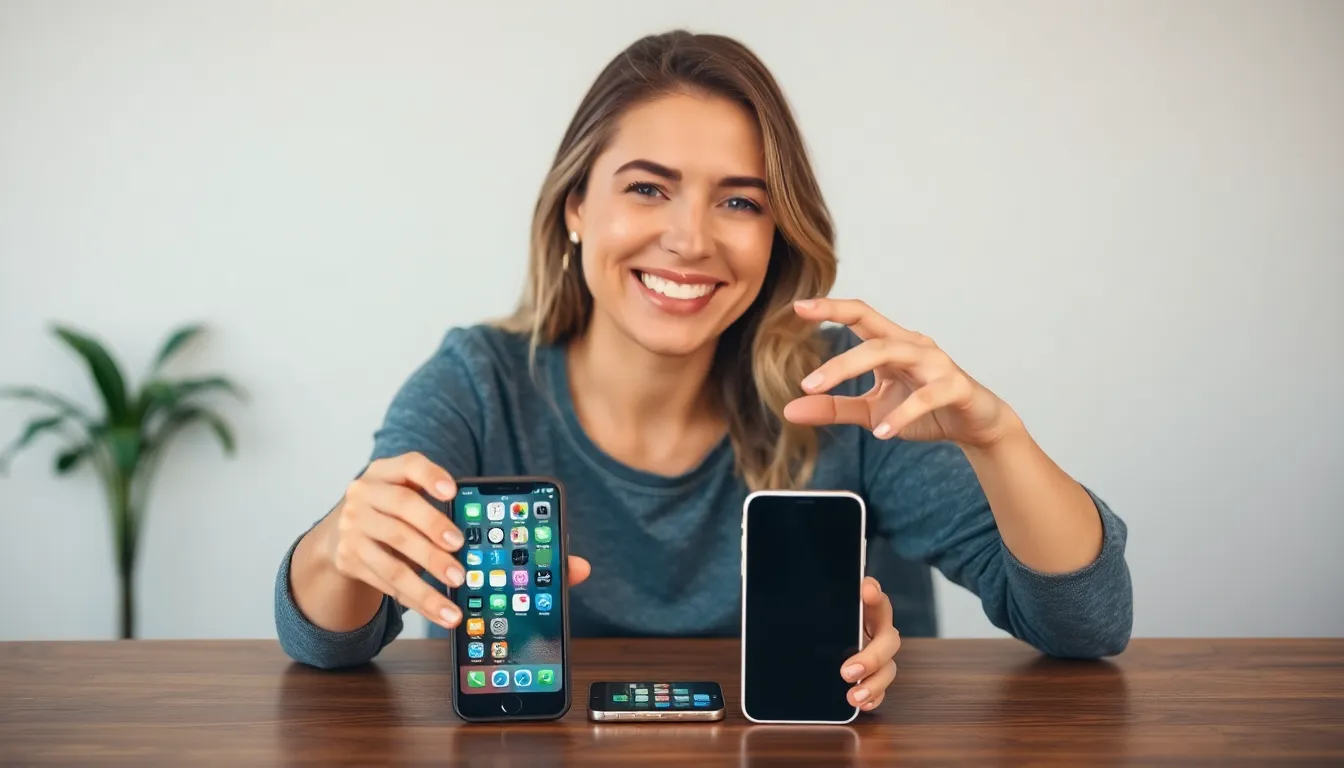Getting a new iPhone is like unwrapping a shiny present, but what’s a gift without the apps that keep it buzzing? If you’ve just upgraded and find yourself staring at a blank screen, don’t panic. Getting your favorite apps back is easier than finding a cat video on the internet.
Table of Contents
ToggleUnderstanding App Transfer Methods
Transferring apps to a new iPhone involves several effective methods. Users can utilize iCloud for a seamless transition. Backing up data through iCloud ensures all apps and settings migrate automatically when setting up the new device.
Another option includes using iTunes or Finder. Connecting the new iPhone to a computer enables users to restore from a backup. This method also transfers purchased apps and their data, providing a smooth experience.
App Store directly allows downloading apps again. Users can log in to their Apple ID, access their purchase history, and reinstall apps purchased previously. This option works well for individuals who prefer a clean slate without unwanted data.
Then, there’s Quick Start, available for iPhones running iOS 11 or later. This feature allows users to set up their new device by placing it near the old one. It facilitates app transfer along with other settings, reducing setup time significantly.
Using Family Sharing may also assist in app management. With Family Sharing, one can share downloaded content, including apps, among family members. This method ensures everyone benefits from purchased apps without duplicate expenses.
Lastly, third-party software presents alternatives for transferring apps. Programs like AnyTrans offer solutions for users who want more control over their data transfer. Although these options require installation, they can be efficient and effective.
Overall, these various methods simplify the app transfer process, ensuring a smooth transition to the new iPhone.
Using iCloud to Transfer Apps

Utilizing iCloud provides an effortless way to transfer apps to a new iPhone while preserving settings and data. Users can enjoy the benefits of automatic synchronization across devices.
Setting Up iCloud Backup
To begin using iCloud, users activate the iCloud feature on their old iPhone. They navigate to Settings, tap on their name, then select iCloud. After enabling iCloud Backup, choosing “Back Up Now” ensures that all apps, settings, and personal data are saved. Frequent backups before transferring streamline the process, making app retrieval easier.
Restoring from iCloud
Restoring from iCloud occurs during the new iPhone setup. Users select “Restore from iCloud Backup” after signing in with their Apple ID. All backed-up apps and settings will automatically download to the new device. It is crucial to pick the most recent backup for the latest app versions. Users should ensure a stable internet connection throughout the process for faster and smoother restoration.
Using iTunes for App Transfer
Transferring apps via iTunes offers a straightforward solution for users migrating to a new iPhone. Ensuring all purchases and data are securely transferred simplifies the transition.
Syncing Apps with iTunes
Syncing apps through iTunes requires a few simple steps. First, connect the old iPhone to the computer running iTunes. Next, select the device icon within iTunes and navigate to the Apps tab. Users can choose to sync all apps or select specific ones. After selection, clicking the Sync button transfers the apps directly to the computer. Now, connect the new iPhone to iTunes, and choose the Sync option again to install the previously synced apps. This method keeps all app data intact and ensures a smooth transfer process without losing vital information.
Troubleshooting iTunes Issues
Common problems may arise during the app transfer process with iTunes. If users experience issues, they should first ensure that they are running the latest version of iTunes. Restarting both the computer and iPhone often resolves minor glitches. If apps are not syncing, checking the USB connection and trying a different cable can help. In some cases, disabling antivirus software temporarily boosts iTunes functionality. Users should also verify that their iPhone is recognized by iTunes, as this is essential for transferring apps successfully. Following these troubleshooting steps can mitigate most common connectivity problems.
Using the App Store to Download Apps
The App Store provides a straightforward way to access and download apps on a new iPhone. Users can easily find and install their former app choices directly from the store.
Finding Your Previously Purchased Apps
Accessing previously purchased apps is simple. Users start by opening the App Store and tapping their profile icon in the upper right corner. From there, they select “Purchased” to view a list of all apps associated with their Apple ID. This feature makes it easy to locate and redownload apps previously acquired, ensuring that no favorites get lost during the transition to a new device.
Downloading Apps on Your New iPhone
Downloading apps on a new iPhone occurs through a few easy steps. First, users open the App Store and search for the app by name or category. Once found, tapping the download icon initiates the installation process. Users may also explore different app categories, including Games, Productivity, and Social Networking, to discover new options. After installation, apps appear on the home screen, ready for immediate use.
Checking App Compatibility
Verifying app compatibility is crucial before transferring apps to a new iPhone. Users should first check if their favorite apps are supported on the latest iOS version. Each app in the App Store lists its compatibility requirements, making it easy for users to confirm whether their apps will work on their new device.
Updating apps regularly helps maintain compatibility. Users can launch the App Store, tap on their profile icon, and check for updates. If updates are available, users can install them to ensure smooth functionality on the new device.
Some apps may not automatically transfer due to compatibility issues. Users should verify they’re using the latest version of iOS, as older versions may hinder app performance. If an app isn’t functioning properly, searching the App Store for an alternative version or an equivalent app can provide a solution.
Most popular apps receive frequent updates to stay compatible. It is wise to read recent user reviews to gauge how well an app performs with the latest iOS version. Checking the app’s page for details on recent updates-oriented enhancements ensures that users don’t miss critical features.
In some cases, users may encounter issues with device-specific apps. Users should consider whether certain apps require hardware features exclusive to previous iPhone models. For instance, apps dependent on older biometric systems or design elements may face restrictions.
Comparing the current app list with available options in the App Store can help identify which ones need replacement. Not all apps will transition seamlessly; therefore, users must be prepared to find new solutions if necessary.
Getting apps onto a new iPhone doesn’t have to be a daunting task. With a variety of methods available users can effortlessly restore their favorite apps and settings. Whether using iCloud Quick Start iTunes or the App Store each option provides a straightforward way to enhance the new device experience.
It’s essential to check app compatibility with the latest iOS to ensure a smooth transition. By keeping apps updated and exploring alternatives when necessary users can enjoy a seamless experience on their new iPhone. Embracing these strategies will make the app transfer process efficient and enjoyable.



